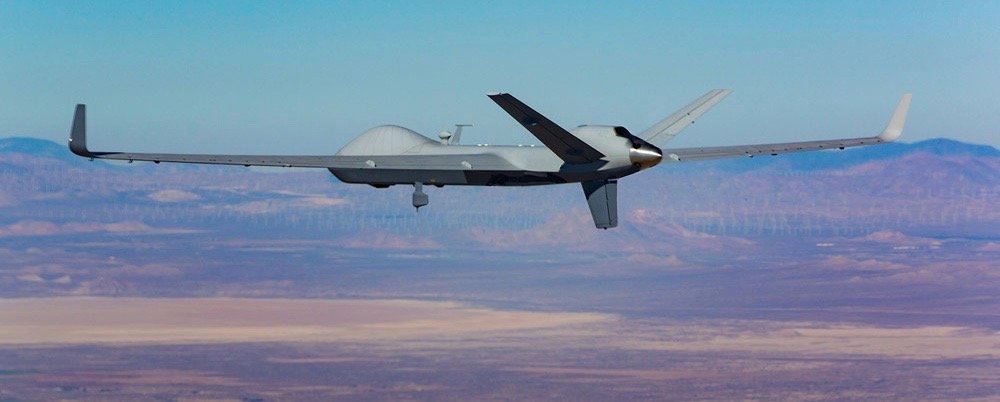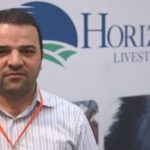A Russian writer recently made a bold claim, namely that Russia sought a diplomatic solution to the recent round of fighting between Azerbaijan and Armenia because it recognised that it is militarily weak compared to Turkey. Is his assessment accurate?
Alexander Zhelenin referred to three major conflicts in 2020 in which Turkey and Russia played roles on opposite sides with Turkey’s side prevailing each time, in an analysis published by Russian state news agency Rosbalt. The conflicts were the rebel pushback of Syrian government forces in the Idlib province, the Turkish-backed Government of National Accord (GNA) counteroffensive against the Libyan National Army (LNA) in Libya and the latest clashes between Turkish-backed Azerbaijan and Armenian separatist over the disputed region of Nagorno-Karabakh.
“The true reason for Russia’s restraint (in Nagorno-Karabakh) was Russia’s military weakness vis-à-vis Turkey as demonstrated in Syria and Libya,” Zhelenin wrote. “(Russian President Vladimir) Putin feared Turkish military power and (Turkish President Recep Tayyip) Erdoğan’s unapologetic attitude towards using it.”
“Moscow suffered three defeats from Turkey in a year,” Zhelenin said. The most devastating of these defeats was in Idlib since Russia’s military presence in Syria is much more overt than in Libya – where it mostly relies on private military contractors to give itself plausible deniability for its activities there, he said.
“The consequence of Moscow’s March fiasco in Syria was the Kremlin’s refusal – not verbally but the real deal – to support its CSTO ally, Armenia in the Karabakh war,” Zhelenin said, referring to a military alliance of post-Soviet states. “As a result, Yerevan suffered a defeat from the Azerbaijani army, backed by the powerful 700,000-strong army of the Turkish Republic well-equipped with modern (weaponry).”
The use of homemade drones in particular undoubtedly won Ankara many battlefield victories against Russian-equipped forces throughout 2020. However, this doesn’t necessarily mean that Moscow has concluded that it is weak in the face of Turkey’s growing military capabilities.
Analysts at BlueMelange, an Ankara-based independent research group, believe that Zhelenin missed one crucial point in his analysis. The Turkish military “could directly involve itself in conflict zones – with boots on the ground – as well as use its proxy military forces” while Russia’s couldn’t “due to international pressure on it”, BlueMelange told Ahval.
“Therefore, we could observe both Turkish Armed Forces directly involved with its military hardware, experienced operators and systems in Tripoli, Idlib and Nagorno-Karabakh,” the group said. Russia, on the other hand, watched as its respective allies desperately tried to fend off the “well-equipped and trained Turkish war machine” with largely obsolete military hardware, it said.
Again, none of this necessarily means that Russia perceives itself as militarily or technologically weak compared to Turkey.
“Moscow takes the threat of Turkish drones seriously only in limited terms,” Tom Rehnquist, research analyst for Stratfor, a geopolitical intelligence platform under the RANE company, told Ahval. “In its recent conflicts, Russia has demonstrated a deft balance of minimising the exposure of material and service members, while maximising geopolitical benefits.”
In incidents such as Idlib in early 2020, Turkish drones complicated this balance. However, with Russia having secured its base on Syria’s eastern Mediterranean coast, helping Syrian President Bashar Assad recapture of Idlib was a “moderate objective” for Moscow, he said. “The presence of Turkish drones, while likely manageable if the objective was serious enough, risks the lives of deployed service members.”
While Turkish drones could hardly defend Idlib city on their own, they could succeed in afflicting “unnecessary” damage against Russian forces, Rehnquist said.
“Moreover, considering Russia’s mixed forces in the region in which Syrian forces operate complicated anti-air weapons, Moscow would be putting its forces in poorly-trained hands,” he said. “Therefore, Putin decided against a renewed offensive.”
A major recurring factor in the success of Turkish-made drones over all three battlefields was their ability to counter older Russian-made air defences operated by their opponents.
These particular Russian systems were “mostly old-style SACLOS-CLOS (Semi-automatic command to line of sight/Command to line-of-sight guidance) or semi-active radar-guided systems and were all are outdated for modern combat warfare, as we’ve seen in Libya and Syria”, BlueMelange said.
While the skies over Idlib were relatively lightly defended, Turkish-made Bayraktar TB2 drones succeeded in destroying over a dozen Russian-built LNA Pantsir-S1 air defence systems in Libya.
While Armenia lost long-range S-300 air defence missiles in the Nagorno-Karabakh war last year, their destruction was mostly, if not entirely, caused by Azerbaijan’s Israeli-built Harop loitering munitions, also known as “kamikaze” or “suicide drones”. Nevertheless, Azeri President Ilham Aliyev credited his country’s recently acquired Bayraktars for destroying $1 billion worth of Armenian military hardware. Yerevan lost over 200 tanks to such strikes throughout the fighting.
BlueMelange noted that such older Russian systems in the hands of these respective forces are “vulnerable against NATO-standard jamming and drone swarm applications of which Turkey has clear experience due to world-class Electronic Warfare and SEAD/DEAD (Suppression of Enemy Air Defences/Destruction of Enemy Air Defences) training and drills at the 3rd Airbase of the Turkish Air Force at Konya”.
Land-based Turkish electronic warfare systems, such as the KORAL, operated alongside airborne electronic countermeasures can “easily” jam such old systems, which cannot detect nor track low-speed targets such as the TB2, paving the way for their destruction, it said.
Another advantage Turkey had over these Russian-equipped forces was the fact that many of their air defences had limited radars views.
“They are seriously behind the Western NATO systems, lack 180- or 360-degree coverage, fire-and-forget engagements and modern guidance-command systems of NATO,” BlueMelange said.
“A2/AD (Anti Access/Area Denial) air defence systems of Russian Aerospace Forces have many fire units interconnected to each other via battlefield data fusion and C4I (command, control, communications, computers and intelligence) centres to get a real picture of air space to identify threats,” it said. “But this kind of modern fusion centres are not available in export systems.”
Rehnquist pointed out that drones generally “present unique issues” when it comes to the larger scope of air defences.
“Top of the line systems such as the S-400 are designed to destroy high altitude aircraft,” he said.
High-flying bombers are in most cases the largest, most expensive and powerful aircraft in any air force, Rehnquist said. Consequently, S-400s and comparable systems pose a strong deterrent against them flying over enemy airspace. This isn’t the case with drones, which are far cheaper and pilotless.
“An anti-air battery would have to expend endlessly more expensive missiles to take out a comparable worthless object,” Rehnquist said. “Moreover, drones can fly at low altitudes and in much greater numbers, further diminishing the impact of advanced anti-air batteries.”
This dynamic certainly doesn’t mean that either Russia or the United States, which faces the same problem, have become “military inferiors” to drone attacks, he said.
“In addition to their current offerings, both countries are developing new short-range anti-air defences such as the American IM-SHORAD Stryker, and the Russian Derivatsyia-PVO,” Rehnquist said.
“In a proper conflict in which layered air defences were in place, drones would offer a negligible impact. However, in cases in which asymmetric weaknesses are present, drones will continue to offer cheap offensives, generating contained tactical victories,” he said.
By: Paul Iddon
Source: Ahval



